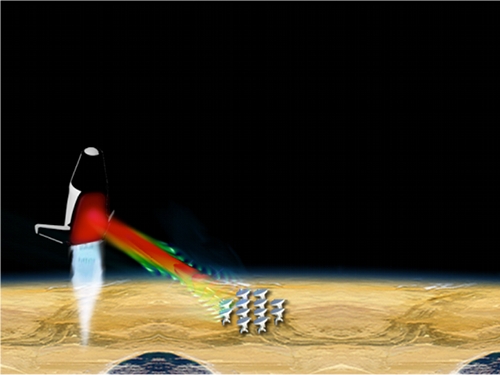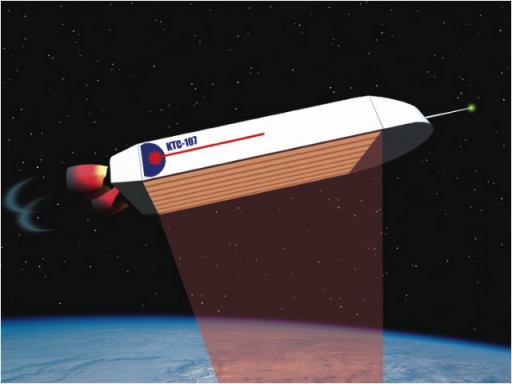Beaming Rockets into Space
January 24, 2011 | Source: Astrobiology

A conceptual microwave-propelled lightcraft receives microwave beams from an array of microwave sources on the ground. (Kevin Parkin)
NASA is conducting a study to examine the possibility of using beamed energy propulsion for space launches.
A beamed thermal propulsion system would involve focusing microwave or laser beams on a heat exchanger aboard the rocket. The heat exchanger would transfer the radiation’s energy to the liquid propellant, most likely hydrogen, converting it into a hot gas that is pushed out of the nozzle.
The smallest real laser launch system would have 25 to 100 megawatts of power while a microwave system would have 100 to 200 megawatts
In the near term, beamed energy propulsion would be useful for putting microsatellites into low Earth orbit, for altitude changes or for slowing down spacecraft as they descend to Earth. But the technology could in the future be used to send missions to the Moon or to other planets and for space tourism.

Laser propelled spacecraft (Jordin Kare)
Also see: NASA Ames’ Worden reveals DARPA-funded ‘Hundred Year Starship’ program
